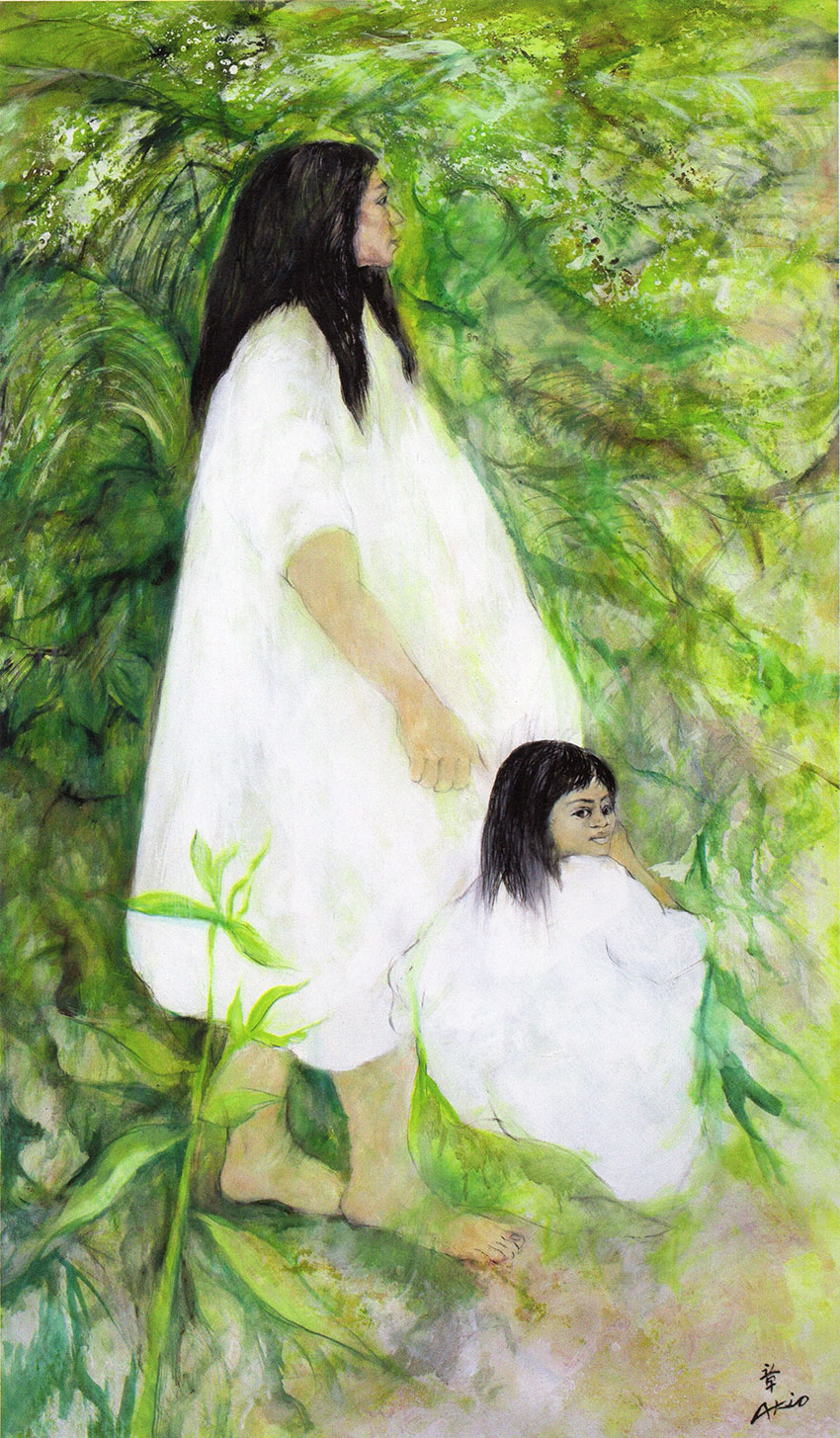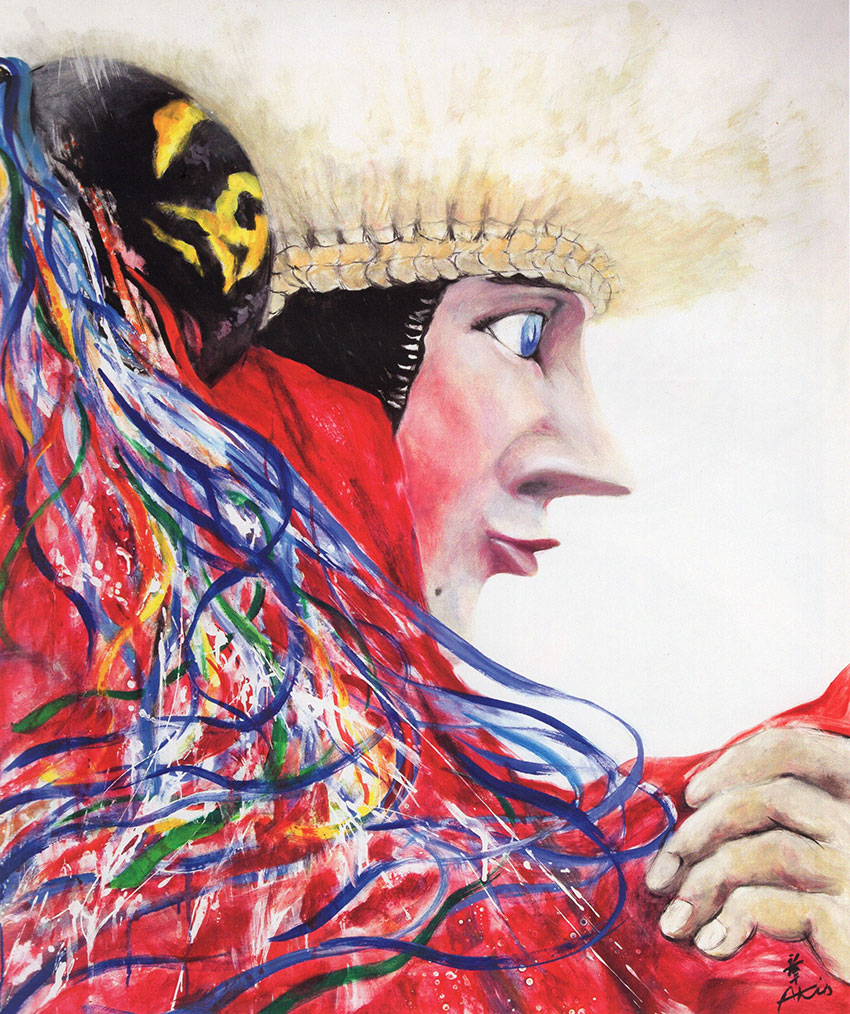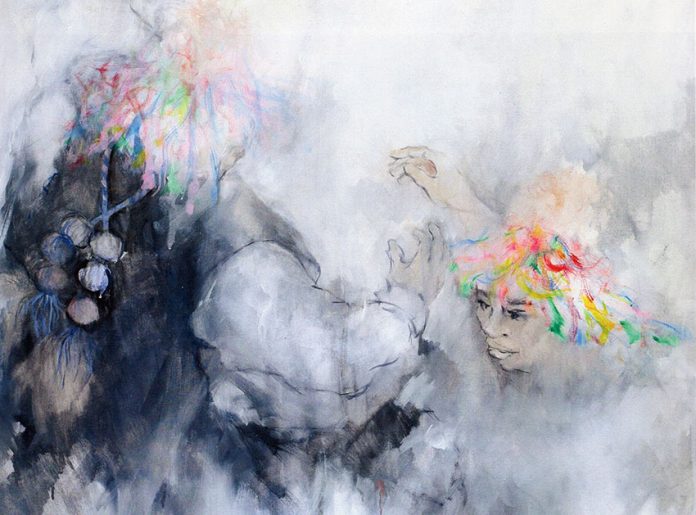Mexico captivates hundreds upon hundreds of artists from the Americas and Europe, no surprise there. But it has held a strong fascination for Japanese artists as well despite, or perhaps because of, the huge cultural differences.
Akio Hanafuji is a soft-spoken man who has a unique take on the traditional cultures of Chiapas struggling to survive in the modern world. Born in 1949 in the Osaka prefecture, he graduated from the Osaka University of Arts in 1975, traveling to Mexico soon after.
He had been captivated in school by images of the Lacandon Rainforest in Chiapas, and the Lacandon Mayan people who inhabit it.
His desire was, of course, to paint the Lacandon and their way of life. At this time, the region was quite cut off from the rest of the world. He took time to integrate himself in the community, living in a palapa, sleeping in a hammock, working the corn and bean fields and learning their Mayan language. This not only earned him the Lacandons’ trust, but it built a base from which his career would unfold.
His plan was to leave Mexico after a few years in Chiapas, but he was given the opportunity to study his masters at Mexico’s prestigious La Esmeralda National School of Painting, Sculpture and Print. Even before graduating in 1978, he was invited to exhibit his work at the Palacio de Bellas Artes (Palace of Fine Arts) in Mexico City.

He marvels about that to this day, stating that painters in Japan would need an impeccable career over 50 years to get a similar honor in that country.
The exhibition led to the opportunity to help establish an art department at the Autonomous University of Guerrero, where he worked for almost 10 years. He spent many years teaching, painting, and doing murals in states such as Oaxaca, Guerrero, Morelos, Jalisco, and Michoacán but visited Chiapas as much as he could. Finally, in 2006, he decided to leave everything else behind and move to Chiapas for good.
Hanafuji’s early work in Mexico shows strong influence from Mexico’s native muralism tradition. However, he is the same age as those from the following artistic movement called the Ruptura. Mexicans of this generation rebelled against the socialist and nationalist philosophy of muralism in favor of artistic expression more in line with international movements.
As a foreigner, Hanafuji had no dog in this inter-generational fight, so instead of choosing a side he has taken the best of what both philosophies have to offer.
From muralism he learned Mexico’s tradition of depicting the country’s folk traditions as well as many stylistic and technical elements from artists like Diego Rivera. Like those of the Ruptura, he believes that it is essential that artists develop their own voice in their work, follow their own path rather than follow an ideology.
He also, by default, brings in Japanese influence. The result is to depict Mexico’s local cultures from a unique perspective.

It is important to note that his life and career has been strongly linked to some of the poorest regions of this country — Chiapas, Guerrero, and Oaxaca.
His current style and work was established in 2006 and is squarely focused on Chiapas’s folk traditions thematically, in a style that takes advantage of his roots as a Japan-trained artist. In the book, Akio Hanafuji: Esencia, published by the state of Chiapas, poet and professor Marisa Trejo Sirvent comments that “Akio knows how to observe the rituals and traditions of Mayan origin in Chiapas.
He does not turn to the past but rather (stays in) the present … He does not imitate the art of this (Mayan) world … nor does he project an exoticism onto it … Akio is one of them. He does not just reflect the picturesque, which is common in paintings done by foreigners.”
The combination of Chiapan traditional life with Japanese brushstrokes and sensibility to color is striking, especially on his canvases. He depicts the life and rituals of the Tzotzil, Tzeltal, Zoque and Chiapa peoples of the Chiapan Highlands region where he currently lives. When he can, he still gets out to his beloved Lacandon Rainforest.
In some of his work, especially murals, strong colors appear, but perhaps his most striking are those in which colors are hinted at rather than dominate the canvas. Light strokes, lots of white space and hints at the colors of the costume and decorations pushes the mind to fill in the rest, giving a dreamlike quality. What Akio is showing you is how he sees Chiapas … and it is a beautiful sight.
Over 70 now, Hanafuji is still a very active painter. His small house in the El Cerrillo neighborhood of San Cristóbal de las Casas is both a refuge and workspace, a balance between a workshop filled with oversized canvases in various stages of completion and a peaceful garden right outside its door.

He is forever grateful to his adopted Mexico because its culture and liberal attitudes have offered him opportunities that would have never been possible in Japan.
Leigh Thelmadatter arrived in Mexico 17 years ago and fell in love with the land and the culture. She publishes a blog called Creative Hands of Mexico and her first book, Mexican Cartonería: Paper, Paste and Fiesta, was published last year. Her culture blog appears weekly on Mexico News Daily.
